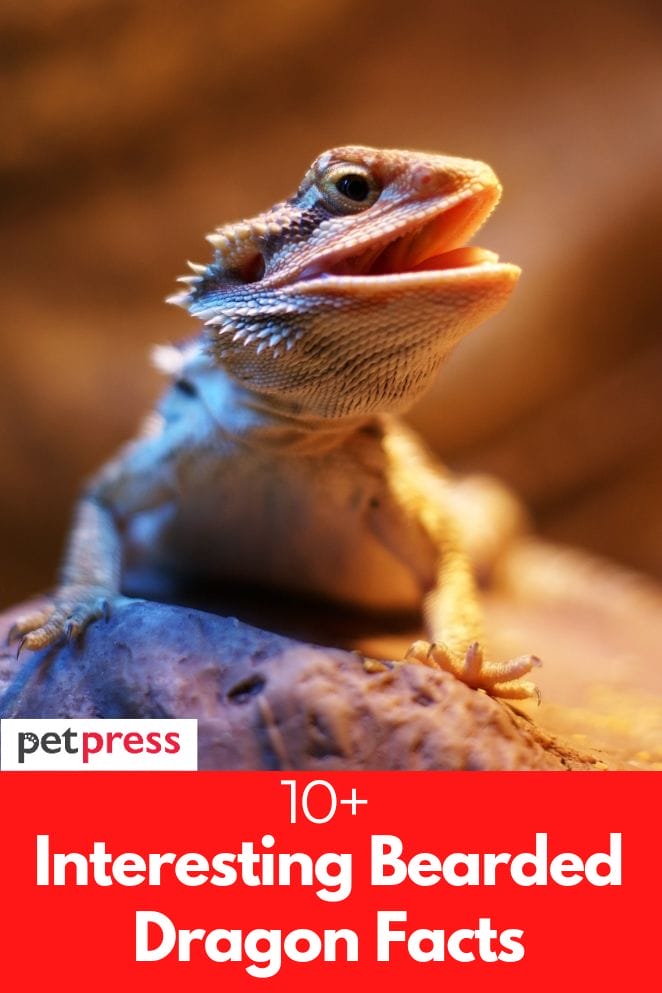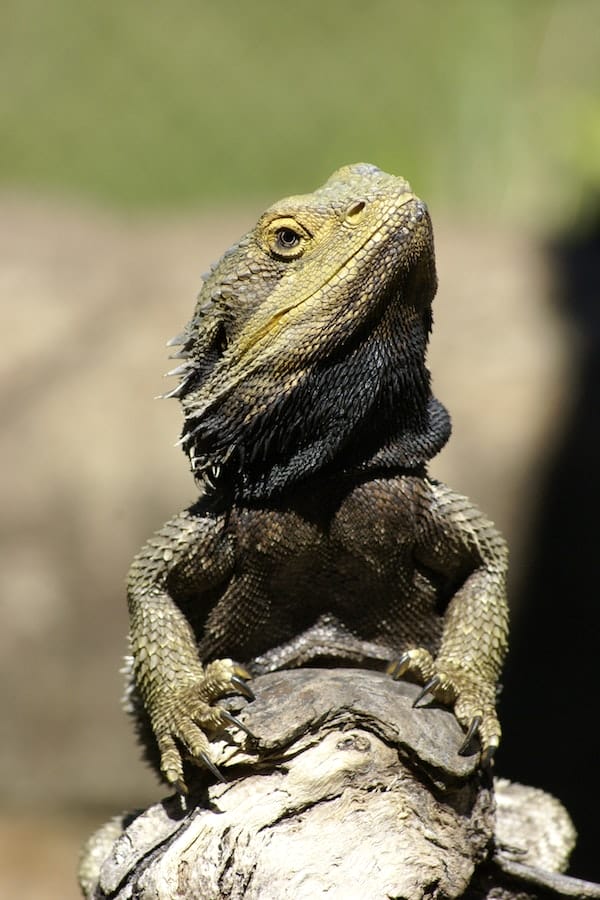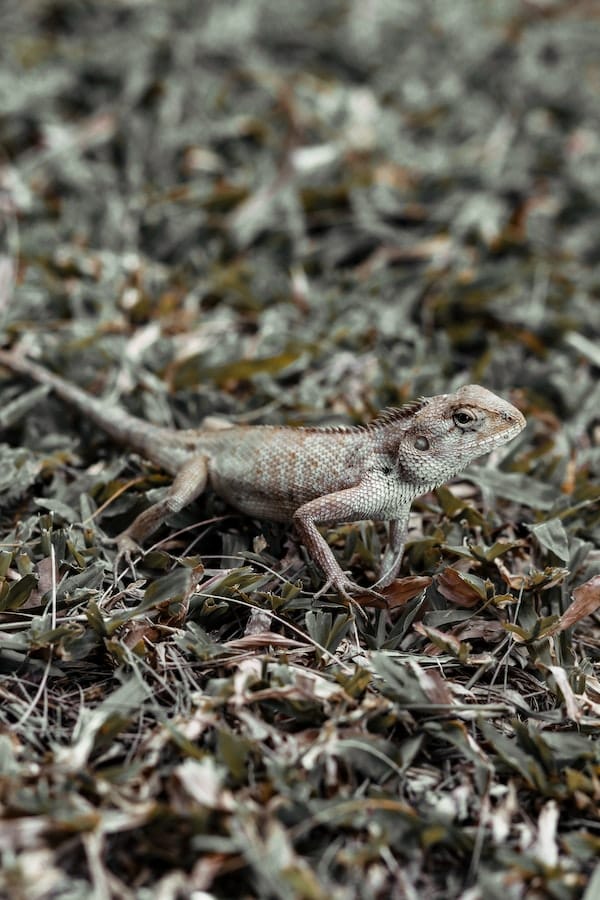
The bearded dragon is a type of lizard that is found in Australia. They are typically gray or tan in color, and they have a beard-like tuft of hair on their chin.
Bearded dragons are omnivorous, meaning that they eat both plants and animals. They can grow to be up to 24 inches long, and they make popular pets.
Bearded dragons are fascinating reptiles that have many unique characteristics. They are known for their small size, long tongues, and ability to change color.
They can be quite active during the day, whether they’re basking in the sun or exploring their surroundings.
Here are some facts about bearded dragons facts you should know:
Fact #1: Bearded dragons are native to Australia.
Bearded dragons are native to Australia, a large country located in the southern hemisphere.
They are characterized by their long, slender bodies and their distinctive beard-like tuft of hair on their chin.
These lizards are omnivores, meaning that they eat both plants and animals in order to survive.
Fact #2: Bearded dragons are lizards that can grow up to 24 inches long.
Bearded dragons are lizards that are known for their long, slender bodies and ability to grow up to 24 inches in length.
These reptiles are native to Australia, where they spend much of their time basking in the sun or exploring their surroundings.
Despite their relatively small size, bearded dragons have many unique characteristics that make them fascinating animals to study and observe.
Whether you are a herpetologist, reptile enthusiast, or just a casual observer, there is much to learn about these interesting lizards.

Fact #3: Bearded dragons have a row of spines down their back and sides that resemble a beard, hence their name.
Bearded dragons are named for the row of spines that runs down their back and sides, giving them a “beard-like” appearance.
These spines help protect the bearded dragon from predators, as they make it difficult to grab or hold onto this agile lizard’s body.
Bearded dragons also have short legs, long tongues, and excellent vision, which allow them to move quickly and easily through their native Australian habitats.
Fact #4: Bearded dragons are omnivores, meaning they eat both plants and animals.
Bearded dragons are omnivores, meaning that they eat both plants and animals in order to survive.
This makes them excellent hunters, as they can easily adapt to different types of food sources depending on their environment and the availability of different types of prey.
While bearded dragons typically prefer insects, such as crickets or mealworms, they also eat small lizards, mice, and even other bearded dragons.
They get most of their nutrients from plants and vegetables, including kale, collard greens, carrots, bell peppers, and many other types of leafy greens.
Fact #5: Bearded dragons are generally docile creatures that make great pets.
Bearded dragons are generally docile creatures that make great pets.
They are known for their friendly, calm nature, as well as their ability to adapt to different environments and lifestyles.
These lizards are popular among reptile enthusiasts and pet owners alike, as they can be easily cared for and maintained with minimal fuss or effort.
Whether you’re looking for a pet that is active during the day or requires minimal care and attention, a bearded dragon may be the perfect choice for you.

Fact #6: When threatened, bearded dragons will puff out their beard to make themselves look bigger and more intimidating.
When threatened, bearded dragons will often puff out their beard and make themselves appear bigger and more intimidating.
This defensive behavior is a way for the lizard to scare away potential predators and protect itself from harm.
Though bearded dragons are generally docile creatures, they are capable of defending themselves when needed.
Besides puffed-out beards, these lizards may also hiss, lunge, or bite to scare off predators and protect themselves.
Thus, when dealing with threatened bearded dragons, it is important to exercise caution and respect their natural defenses.
- Related Post: How to name your Pet Bearded Dragon
- Related Post: Badass Bearded Dragon Names
Fact #7: Bearded dragons are also capable of changing the color of their skin to help regulate their body temperature.
Bearded dragons are a species of lizard that are known for their ability to change the color of their skin in order to regulate their body temperature.
This unique characteristic allows them to adapt to different environments and conditions, making them well-suited for survival in a wide range of habitats.
When faced with extreme temperatures or other environmental stressors, bearded dragons will use their color-changing abilities to help them stay cool and comfortable.
For example, in hot temperatures, they may appear darker or take on more brownish hues in order to absorb more heat from the sun.
In cooler temperatures or when exposed to cold air, they may become lighter or take on more grayish tones in order to reflect light and stay warm.
Fact #8: Bearded dragons are diurnal animals, meaning they are active during the day and sleep at night.
Bearded dragons are diurnal animals, meaning that they are active during the day and sleep at night.
This unique characteristic makes them well-suited for survival in a wide range of habitats, as it allows them to adapt to diverse environmental conditions and circumstances.
During the day, bearded dragons are typically very active, moving quickly and foraging for food.
They spend their time hunting for insects, lizards, and other small prey, as well as consuming plants and vegetables for sustenance.
At night, when temperatures begin to drop, they seek shelter in cool burrows or dark crevices to rest and recover from the previous day’s activities.

Fact #9: During the winter months, bearded dragons will often go into brumation.
During the winter months, bearded dragons will often go into brumation, a state of deep sleep and inactivity that helps them conserve energy and adapt to the changing environment.
This process allows them to slow down their metabolism and lower their body temperature, making it easier for them to survive extreme temperatures and low food availability during the cold season.
Fact #10: Female bearded dragons can lay up to 30 eggs at a time.
Female bearded dragons are capable of laying up to 30 eggs at a time, making them one of the most prolific egg-laying species in the animal kingdom.
This ability allows them to reproduce quickly and easily, helping ensure the survival and proliferation of their species over time.
In order to lay their eggs, female bearded dragons typically construct nesting burrows or dig shallow holes in the ground, where they will lay their eggs and protect them until they hatch.
After hatching, baby bearded dragons typically remain with their mother for several months, during which time they learn important survival skills from her.
Fact #11: Baby bearded dragons are called hatchlings or juveniles.
Baby bearded dragons are called hatchlings or juveniles. These young animals are characterized by their small size, bright colors, and playful demeanor.
Hatchlings typically stay with their mother for several months after hatching, during which time they learn important survival skills from her and grow bigger and stronger.
As juvenile bearded dragons get older, they become more independent and are able to fend for themselves in the wild.
They tend to spend a lot of time hunting, exploring, and socializing with other lizards, gradually honing their natural instincts and abilities.
As one of the most popular species of reptiles, bearded dragons are known for their unique color-changing abilities, diurnal nature, and ability to reproduce quickly and easily.
They are well adapted to a wide range of habitats and environmental conditions, making them an ideal choice for pet owners who want a hardy, easy-to-care-for pet.
Whether you are a seasoned bearded dragon enthusiast or just starting out, these fascinating creatures are sure to delight and fascinate you with their unique characteristics and behaviors.


GIPHY App Key not set. Please check settings